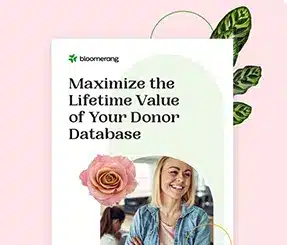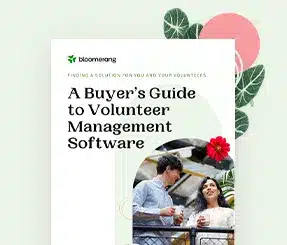The Power Of Storytelling: Transform Your Fundraising Events


Full Platform Overview Chat With Us



Full Platform Overview Chat With Us




As nonprofit professionals, we’re constantly seeking effective ways to enhance our fundraising events. The challenge is real—these events require significant effort and resources. But the potential for donor engagement and fund generation is immense. So, how can you ensure that you make the most of these opportunities? The answer lies in the power of storytelling.
Why stories? Stories have a unique capability to connect deeply with people. In a world bombarded with information, a well-told story cuts through the noise and resonates with the heart.
Our brains are wired to recognize patterns. Stories, in their essence, are patterns that help us navigate the complexity of the world. When we hear a story, it’s not just information we’re processing; it’s an experience we’re living.
Think about the timeless appeal of fables. They’re not just entertaining; they’re relatable. They allow us to see ourselves within the narrative, making the lessons they impart deeply personal and impactful.
Research from Princeton University shows that when we share stories, our physiological responses align. This synchronization isn’t just fascinating; it’s the foundation of community-building. When your donors listen to the same story, they’re not just understanding your mission; they’re becoming a part of it.
Storytelling in fundraising isn’t just about what you tell; it’s about how you tell it. Here are some strategies:
Use video storytelling: Videos can visually bring your mission to life, offering a dynamic way to engage donors, especially when direct involvement isn’t feasible.
Show, don’t just tell: Illustrate the impact of your programs. Let the stories demonstrate the difference your organization is making.
Make stories shareable: Shareable stories extend your reach, turning your donors into ambassadors for your cause.
At a Make-A-Wish fundraising dinner, guests witnessed the heartwarming story of Princess Clementine, a young girl with a critical illness whose dream was to be a princess for a day. The event was transformed into a fairy-tale setting, complete with twinkling lights and magical decorations.
As the highlight of the evening, Clementine, dressed in a beautiful princess gown and sparkling tiara, made a
grand entrance. Her joy and excitement were infectious as she waved her magic wand, surrounded by the enchanted atmosphere of the ballroom.
The impact of this event went beyond fundraising. The guests were deeply moved by the experience of seeing Clementine’s dream come true. This emotional connection turned every one of them into storytellers; storytellers who could now share the tale of Princess Clementine with others, extending the reach and impact of Make-A-Wish’s mission.
The story of Princess Clementine illustrates the power of storytelling in fundraising, showing how a personal and heartfelt narrative can resonate with donors, creating memorable experiences that inspire and connect.
This event wasn’t just about raising funds; it was about bringing a child’s dream to life. The joy on Clementine’s face created a lasting memory, showcasing the power of storytelling in creating memorable experiences that resonate and inspire sharing.
Your event is a story. Understanding your audience’s values and tailoring stories that resonate with them enhances their connection to your cause—and makes it their story. To do this right involves managing the story arc, the program arc, and the fundraising arc of your event, ensuring they align for maximum impact.
This story consists of five chapters.
It’s important to set the right tone from the moment people arrive. Begin your event by making everyone feel welcome. An engaging emcee can guide your audience, setting the tone for the evening and ensuring both in-person and online guests feel included.
Before you make any financial requests, immerse your audience in your organization’s story and impact. Showcase your mission through a blend of video, testimonials, or live demonstrations. This chapter is about illustrating your work’s impact vividly and informatively.
Make your special appeal at the emotional high point of the event. The best time to make your special appeal is after you showcase your mission and before the celebratory part of the event. Use compelling narratives followed by direct asks. Active collection methods, like paddles or Text to Give, are generally more effective.
After the intensity of the fundraising appeal, transition into a celebration. This not only rewards your donors for participating but also leaves them with a feeling of joy and accomplishment.
End the event by expressing heartfelt thanks to everyone involved—donors, volunteers, staff, and beneficiaries. This reinforces the sense of community and shared success.
The special appeal—often the climax of a fundraising event—is a critical opportunity to generate substantial donations. To maximize its impact:
When you bring donors inside your work, you bring them inside your heart, which is your mission. Fundraising events give you an opportunity to show donors your work in action.
By harnessing the power of storytelling, you ensure that your message is not only heard but felt. Stories have the power to stay, resonate, and inspire long after the event is over.
So, as you plan your next fundraising event, think carefully about the stories you choose to share. They could be the key to transforming a good event into a truly memorable one.
What was the most memorable fundraising event you’ve hosted or attended? What made it so memorable? Share your story in the comments below!

Comments